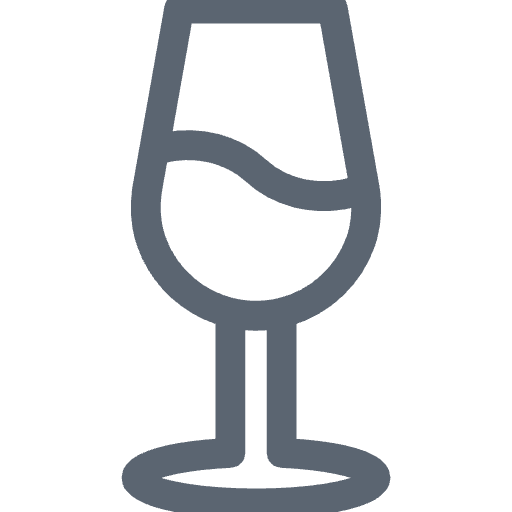About wine from Piedmont
Piedmont is primarily synonymous with great Italian red wine. But it's not just Nebbiolo (and the resulting Barolo and Barbaresco) that grows here. Almost half of the approximately 55,000 hectares of vineyards are planted with Barbera vines. In the past, abundant yields and color intensity were often more important than top quality, which was also the reason for the former popularity of Dolcetto, another widely grown red variety in Piedmont. However, even this variety is now occasionally coaxed into very high quality.
To this day, it's not entirely clear whether Etruscan or Greek immigrants brought viticulture to the region. What is certain is that viticulture has a long tradition here, and beginning in the 19th century, the first attempts at producing dry, great red wines were successful: Barolo was born in Grinzane near Alba around 1850.
Sparkling wine also has a long tradition and great importance in Piedmont: the Asti & Monferrato wine-growing regions produce around 80 million bottles of sweet sparkling wine from Moscato Bianco annually.
Some white wines are also produced here: while Gavi and Arneis are the most cultivated, Timorasso and Nascetta are increasingly producing complex wines.
Floral delicacies from the north
Nonetheless, Piedmont is a land of red wine. Piedmont's northern wine-growing regions are located at the foothills of the Monte Rosa massif: Gattinara and Ghemme are the most famous, joined by Boca, Bramaterra, Coste della Sesia, Lessona, Sizzano, Fara, and Colline Novaresi. Nebbiolo (also called Spanna or Picutener here) plays the main role, with Vespolina and Bonarda also cultivated. The wines can have a similar structure and longevity to Barolo, but are usually somewhat more floral and lighter. Fragrant, elegant, with predominant notes of rose and tar, their Alpine character is sometimes clearly evident, as they often appear less earthy and somewhat cooler than their relatives grown further south.
The Langhe, epicenter of Nebbiolo
Piedmont's true stars come from the Langhe, although in terms of quantity, they are almost insignificant in the context of Piedmont: Barolo and Barbaresco, made from the Nebbiolo grape, are emblematic of the region and are undoubtedly among the greatest red wines in Italy and the world. The late-ripening, highly demanding Nebbiolo grape doesn't make life easy for winemakers. It has always required the very best south-facing slopes and often caused more headaches than yield. But as is so often the case with the good things in this world: they are hard-fought, yet irreplaceable.
Nebbiolo grows to true greatness on the limestone marl surrounding the villages of Barolo and Serralunga d'Alba. While the soils around Barolo are more fertile and compact, resulting in wines that generally have a more elegant, rounder, and more accessible character, the more barren and sandy soils around Serralunga produce more intense, edgier, and longer-lasting wines. After years of aging, great Nebbiolo from the Langhe unfolds an almost incredible spectrum of aromas, ranging from earthy and dark spices, to tar and asphalt, to explosive black cherry, and finally to floral, flowery, and ethereal notes.
Two schools, one success story
Due to the traditionally very long maceration period, the wine possesses a powerful tannin structure that must be slowly broken down over many years to ultimately develop Burgundian finesse and refinement. While traditional Piedmontese winemaking relies on long maceration periods of approximately four to five weeks and aging in large oak barrels, many winemakers have shifted to new oak, barriques, and short maceration since the 1980s. A greater focus on early access and a strong emphasis on the fruit are both the goal and the result. Traditionalists and modernists, as these formerly rival camps were known, are equally successful in their work today and have contributed to elevating Nebbiolo to the top of Italian red wines.
The best Barolos and Barbarescos are characterized by enormous aromatic diversity and power, depth and spiciness on the one hand, and refined delicacy, velvety texture, and self-contained elegance on the other. They are among the most structured, age-worthy, and characterful wines in Italy and the world.

 Piedmont
Piedmont  Dolcetto, dry
Dolcetto, dry juicy & fragrant
juicy & fragrant

 Piedmont
Piedmont  Barbera, dry
Barbera, dry spicy & intense
spicy & intense

 Piedmont
Piedmont  Nebbiolo, dry
Nebbiolo, dry ethereal & complex
ethereal & complex

 Piedmont
Piedmont  Nebbiolo, dry
Nebbiolo, dry ethereal & complex
ethereal & complex

 Piedmont
Piedmont  Barbera, dry
Barbera, dry complex & fragrant
complex & fragrant

 Piedmont
Piedmont  Nebbiolo, dry
Nebbiolo, dry fruity, spicy, cool
fruity, spicy, cool

 Piedmont
Piedmont  Barbera, dry
Barbera, dry elegant & fragrant
elegant & fragrant

 Piedmont
Piedmont  Nebbiolo, dry
Nebbiolo, dry fruity, spicy, cool
fruity, spicy, cool

 Piedmont
Piedmont  Nebbiolo, dry
Nebbiolo, dry complex & concentrated
complex & concentrated

 Piedmont
Piedmont  Nebbiolo, dry
Nebbiolo, dry complex & concentrated
complex & concentrated

 Piedmont
Piedmont  Nebbiolo, dry
Nebbiolo, dry complex & concentrated
complex & concentrated

 Piedmont
Piedmont  Barbera, dry
Barbera, dry spicy & intense
spicy & intense












